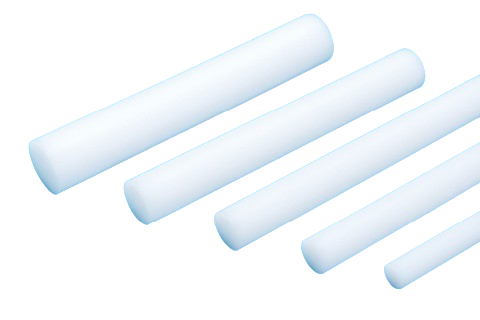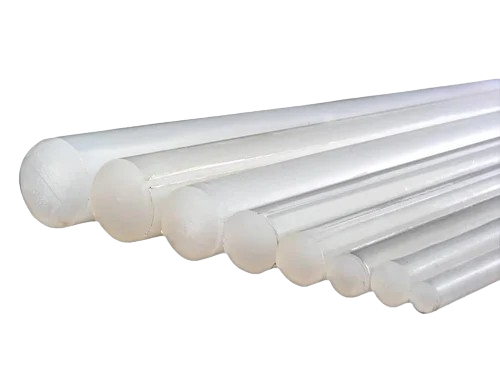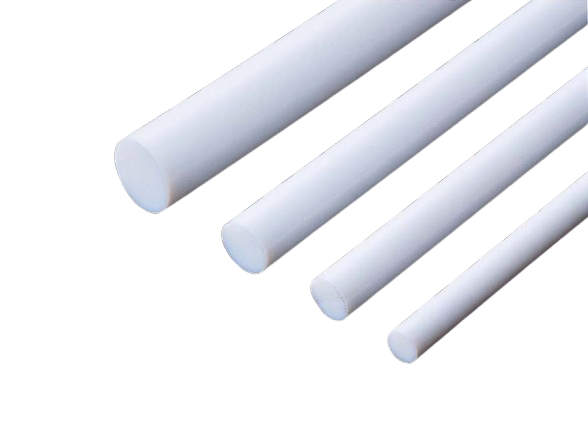-
What Are PCTFE Rods?
- Solid rods made from Polychlorotrifluoroethylene (PCTFE)
- Known for their rigidity and durability
- Used in various industrial and high-tech applications
-
History and Development
- Developed in the 1950s for specialized applications
- Initially used in aerospace and chemical industries
Processing and Fabrication
-
Machining
- Cutting: Can be machined with standard tools
- Drilling and Turning: Suitable for precise drilling and turning operations
-
Custom Fabrication
- Custom Shapes: Can be fabricated into various custom shapes and sizes
- Tolerances: High precision tolerances achievable
Properties of PCTFE Rods
-
Physical Properties
- Color: Transparent or colorless
- Density: Approximately 2.14 g/cm³
- Rigidity: High stiffness and hardness
-
Thermal Properties
- Service Temperature: Up to 200°C
- Thermal Conductivity: Low thermal conductivity, insulating properties
-
Chemical Resistance
- Acids and Bases: Highly resistant
- Solvents: Impervious to most organic solvents
-
Mechanical Properties
- Tensile Strength: High tensile strength
Applications of PCTFE Rods
-
Aerospace Industry
- Components: Used in high-performance aerospace parts
- Seals and Gaskets: Ideal for seals due to chemical resistance
-
Chemical Processing
- Liners: Used to line equipment handling corrosive substances
- Valves: Components for valves in aggressive environments
-
Medical and Pharmaceutical
- Equipment: Parts for pharmaceutical processing equipment
- Diagnostic Devices: Used in various diagnostic and medical device.
Safety and Handling
-
Storage
- Conditions: Store in a cool, dry place away from direct sunlight
- Protection: Avoid exposure to extreme temperatures
-
Handling Precautions
- Protective Gear: Use gloves and protective equipment when handling
- Ventilation: Ensure proper ventilation when machining
-
Disposal
- Regulations: Follow local regulations for disposal
- Recycling: Explore recycling options where available
Advantages of PCTFE Rods
-
Durability
- Long Lifespan: Resilient in harsh environments
- Low Maintenance: Requires minimal upkeep
-
Non-Reactivity
- Safe Handling: Minimal risk of contamination or degradation
- Versatile Use: Suitable for a wide range of applications
Limitations of PCTFE Rods
-
Brittleness
- Impact Sensitivity: Can be brittle and prone to cracking under impact
- Not Flexible: Limited flexibility compared to other materials
-
Cost
- High Material Cost: Generally more expensive than some alternatives
- Processing Expenses: Requires specialized equipment for fabrication
Future Trends
-
Research and Development
- Enhanced Properties: Ongoing research to improve flexibility and impact resistance
- Cost Reduction: Efforts to reduce material and processing costs
-
Emerging Applications
- Advanced Technologies: Potential for new applications in emerging technologies
- Sustainable Solutions: Development of more environmentally friendly processing.




